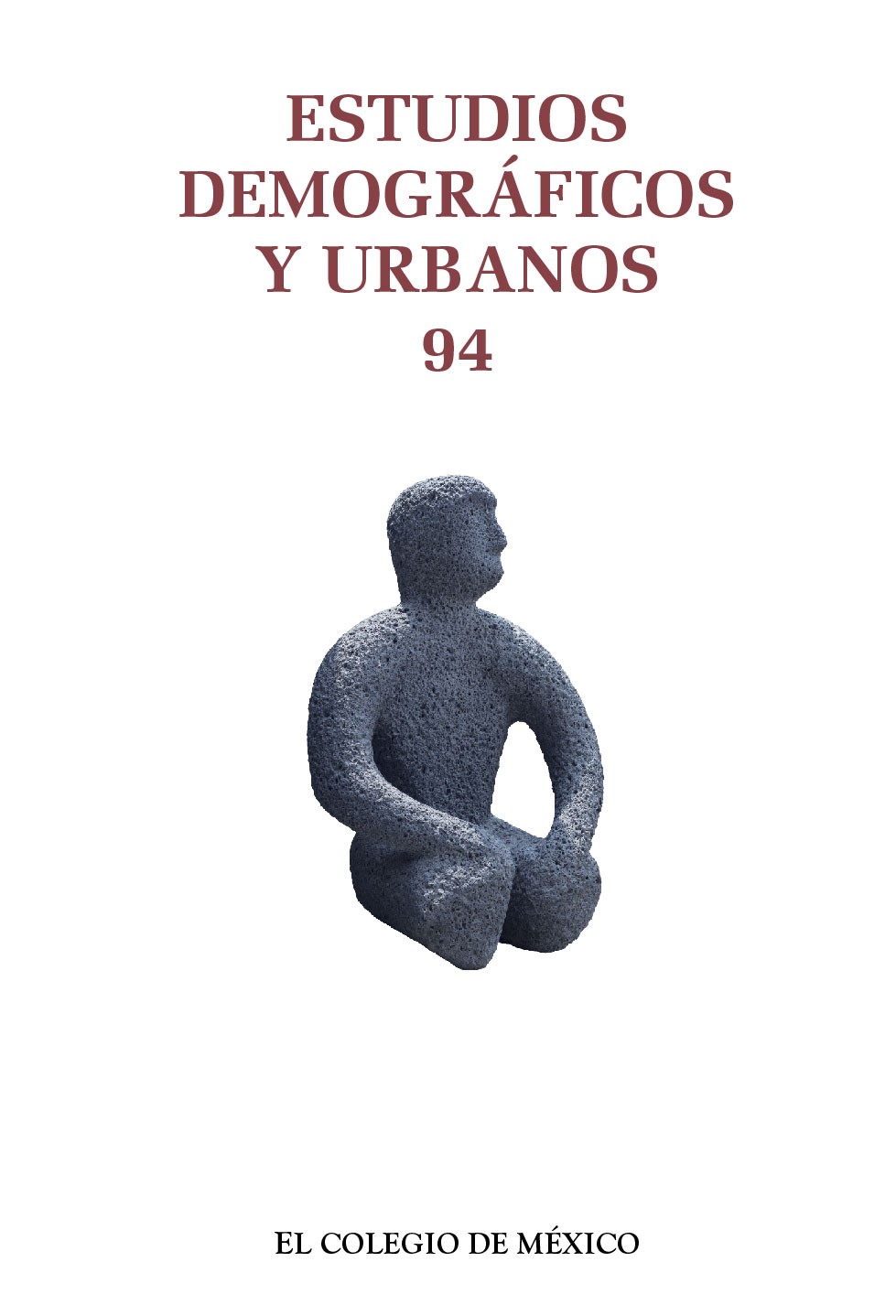Research articles
The costs of urban expansion: An approach based on a hedonic price model in the Metropolitan Area of the Valley of Mexico
Published 2017-01-01
Keywords
- urban expansion,
- peripheral housing,
- hedonic prices
How to Cite
Lara Pulido, J. A., Estrada Díaz, G., Zentella Gómez, J. C., & Guevara Sanginés, A. (2017). The costs of urban expansion: An approach based on a hedonic price model in the Metropolitan Area of the Valley of Mexico. Estudios Demográficos Y Urbanos, 32(1), 37–63. https://doi.org/10.24201/edu.v32i1.1615
Metrics
Views/Downloads
-
Abstract5048
-
PDF (español)2236
-
En línea (español)3613
Downloads
Download data is not yet available.
Copyright (c) 2017 Estudios Demográficos y Urbanos

This work is licensed under a Creative Commons Attribution-NonCommercial-NoDerivatives 4.0 International License.
Metrics
Abstract
The Mexico City Metropolitan Area (MCMA) has experienced an expansion that is not proportional to population growth. Among other forms of settlement, the construction of large, peripheral housing complexes promotes this expansion, imposing individual and social costs. This paper reviews the characteristics of urban expansion in the MCMA and production conditions of peripheral social housing, individuals’ loss of income due to the distance from the workplace and, through a hedonic price model, considers the role played by this distance in the price differential between peripheral and intra-urban housing.References
- Bruegmann, Robert (2005), Sprawl: A compact history, E-book, Chicago, The University of Chicago Press. DOI: https://doi.org/10.7208/chicago/9780226076973.001.0001
- Burchell, Robert W., Anthony Downs, Barbara McCann y Sahan Mukherji (2005), Sprawl costs: Economic impacts of unchecked development, Washington, Island Press.
- Brueckner, Jan K. y Peter F. Colwell (1983), “A spatial model of housing attributes: Theory and evidence”, Land Economics, vol. 59, núm. 1, pp. 58-69. Disponible en: https://www.researchgate.net/publication/46551989_A_Spatial_Model_of_Housing_Attributes_Theory_and_Evidence DOI: https://doi.org/10.2307/3145876
- Coulomb, René y Martha Schteingart (2005), Entre el Estado y el mercado: la vivienda en el México de hoy, México, Universidad Autónoma Metropolitana, Unidad Azcapotzalco.
- Damián, Araceli (2005), “La pobreza de tiempo. El caso de México”, Estudios Sociológicos, vol. 23, núm. 69, pp. 807-843. Disponible en: http://estudiossociologicos.colmex.mx/index.php/es/article/view/396/396
- Duhau, Emilio y Angela Giglia (2008), Las reglas del desorden: habitar la metrópoli. México, Siglo XXI / Universidad Autónoma Metropolitana, Unidad Azcapotzalco.
- Eckenrond, Sarah B. y William L. Holahan (2004), “Teaching the economics of urban sprawl in the principles of economics course”, The Journal of Economic Education, vol. 35, núm. 3, pp. 295-303. Disponible en: https://www.jstor.org/stable/30042604?seq=1#page_scan_tab_contents
- Ewing, Reid, Rolf Pendall y Don Chen (2002), “Measuring sprawl and its impact”, documento de investigación, Washington, Smart Growth America.
- Gillham, Oliver (2007), “What is sprawl?”, en Michael Larice y Elizabeth Macdonald (eds.), The urban design reader, Nueva York, Routledge, pp. 287-306.
- Gordon, Peter y Harry Richardson (1997), “Are compact cities a desirable planning goal?”, Journal of the American Planning Association, vol. 63, núm. 1, pp. 95-106. Disponible en: http://courses.washington.edu/gmforum/Readings/1997_Gordon_Richardson.pdf DOI: https://doi.org/10.1080/01944369708975727
- IMCO (2012), “Movilidad competitiva en la Zona Metropolitana de la Ciudad de México: diagnóstico y soluciones factibles”, México, Instituto Mexicano para la Competitividad, A.C. Disponible en: http://imco.org.mx/wp-content/uploads/2012/1/costos_congestion_en_zmvm2_final_abril.pdf
- INEGI (2007), Encuesta Origen-Destino, México, Instituto Nacional de Estadística y Geografía. Disponible en: http://www.inegi.org.mx/(26 de agosto de 2014).
- INEGI (2010), Censo de Población y Vivienda 2010, México, Instituto Nacional de Estadística y Geografía. Disponible en: http://www.inegi.org.mx/est/contenidos/proyectos/ccpv/cpv2010/
- INEGI (2014), Indicadores de ocupación y empleo al tercer trimestre de 2014, México, Instituto Nacional de Estadística y Geografía. Disponible en: http://www3.inegi.org.mx/sistemas/temas/default.aspx?s=est&c=25433&t=1 (6 de enero de 2015).
- Isunza-Vizuet, Georgina (2010), “Política de vivienda y movilidad residencial en la Ciudad de México”, Estudios Demográficos y Urbanos, vol. 25, núm. 2 (74), pp. 277-316. Disponible en: http://estudiosdemograficosyurbanos.colmex.mx/index.php/edu/article/view/1352 DOI: https://doi.org/10.24201/edu.v25i2.1352
- Negrete, María Eugenia y Catherine Paquette Vassalli (2011), “La interacción entre transporte público y urbanización en la zona Metropolitana de la Ciudad de México: un modelo expansivo que llega a sus límites”, Territorios, núm. 25, pp. 15-33. Disponible en: http://www.redalyc.org/pdf/357/35720830002.pdf
- Pérez-Campuzano, Enrique y Clemencia Santos-Cerquera (2013), “Tendencias recientes de la migración interna en México”, Papeles de Población, núm. 76, pp. 53-88. Disponible en: http://www.redalyc.org/articulo.oa?id=11227645003
- RERC (1974), The costos of sprawl: Excecutive summary, Washington, Real Estate Research Corporation.
- Sedesol (2012), La expansión de las ciudades 1980-2010, México, Secretaría de Desarrollo Social.
- Sedesol y UAM (2008), Estudio de la integración urbana y social en la expansión reciente de las ciudades en México, 1996-2006, México, Secretaría de Desarrollo Social / Universidad Autónoma Metropolitana.
- Sobrino, Jaime (2010), “Migración urbana”, en Conapo, La situación demográfica de México, México, Consejo Nacional de Población, pp. 155-170.
- Sobrino, Jaime (2014), “Housing prices and submarkets in Mexico City: A hedonic assessment”, Estudios Económicos, vol. 29, núm. 1, pp. 57-84. Disponible en: http://www.redalyc.org/articulo.oa?id=59730726003
- Wassmer, Robert W. y Michelle C. Baass (2006), “Does a more centralized urban form raises housing prices?”, Journal of Policy analysis and Management, vol. 25, núm. 2, pp. 439-462. Disponible en: http://onlinelibrary.wiley.com/doi/10.1002/pam.20180/epdf DOI: https://doi.org/10.1002/pam.20180
- Windsor, D. (1979), “A critique of the costs of sprawl”, Journal of the American Planning Association, vol. 45, núm. 3, pp. 279-292. Disponible en: http://www.tandfonline.com/doi/pdf/10.1080/01944367908976967 DOI: https://doi.org/10.1080/01944367908976967


